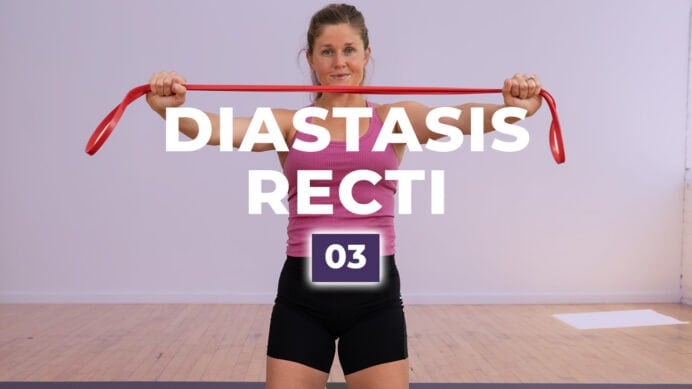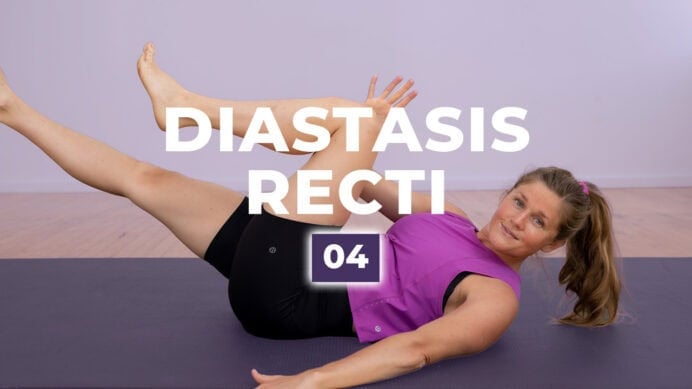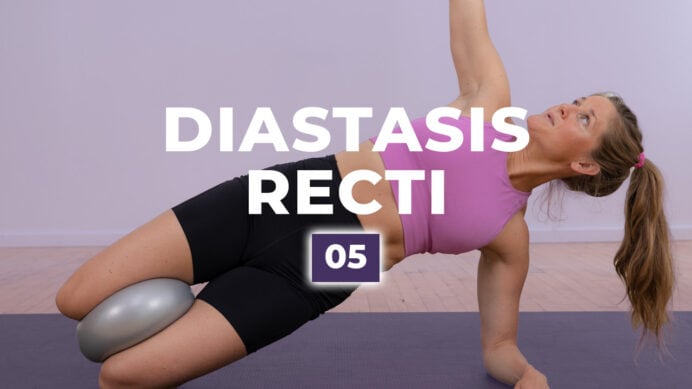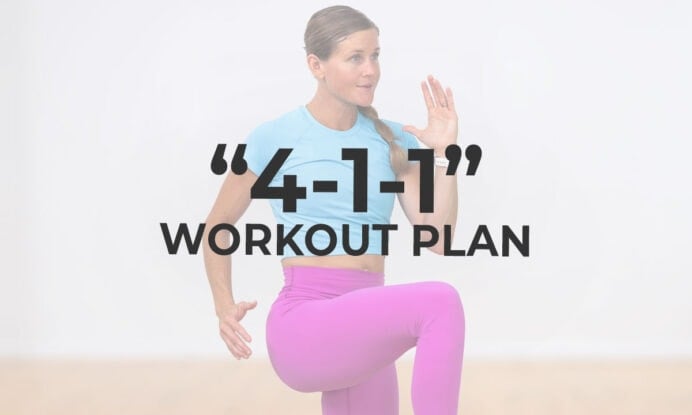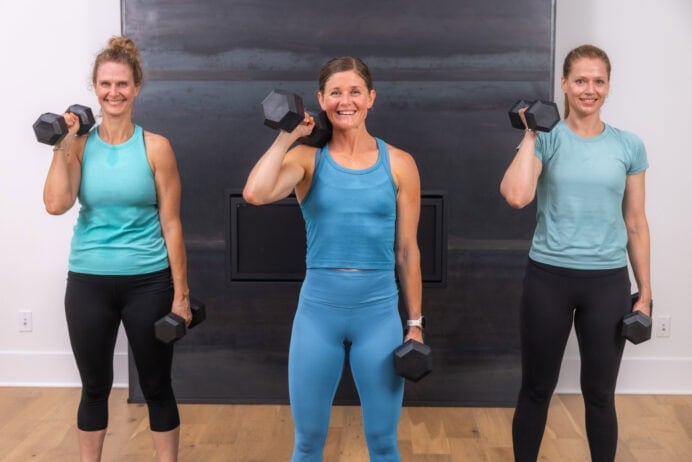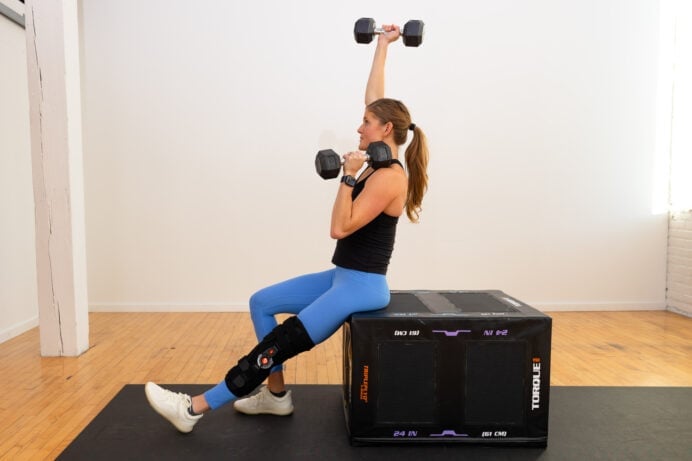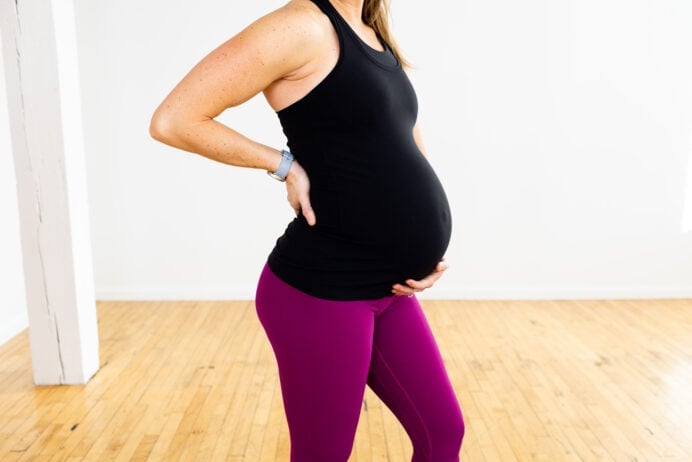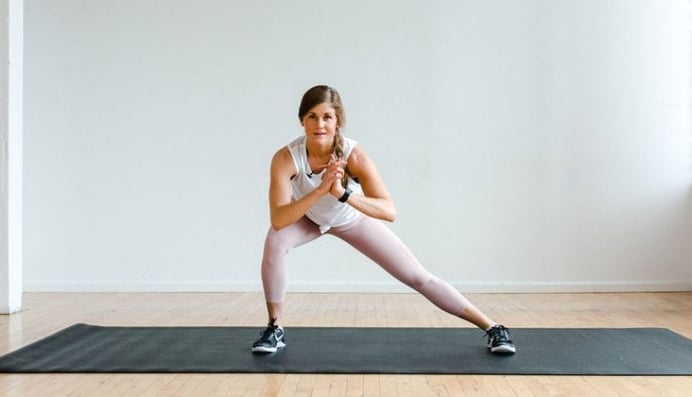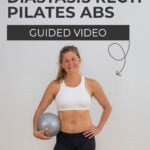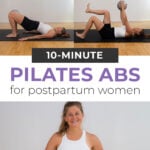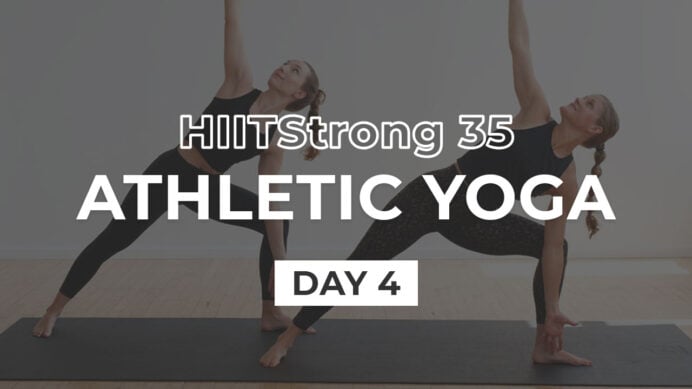
5 Beginner Pilates Ab Exercises for Diastasis Recti (Diastasis Recti #2)
5 of the BEST Beginner Pilates Exercises for healing Diastasis Recti! Add this to your workout routine to repair abdominal separation, strengthen the pelvic floor, and rebuild your abs after baby. This ab workout uses a pilates sponge ball to help engage the transverse abdominal muscles but you can substitute a kids squishy ball or throw pillow if you don’t have one available.
This is WORKOUT 2 of my Diastasis Recti Program.
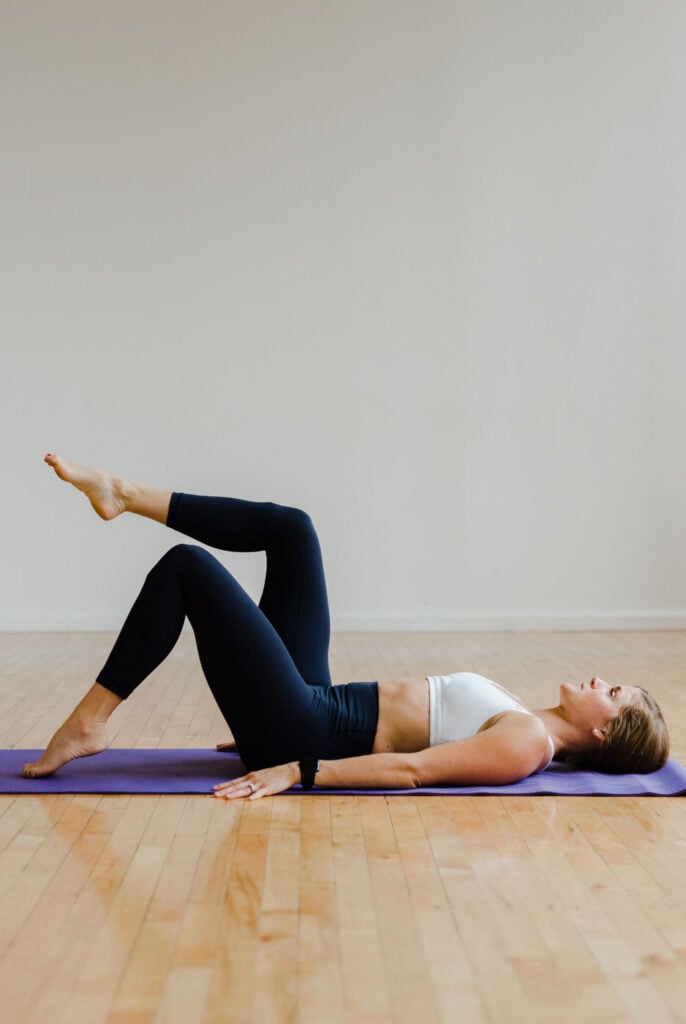
LET’S GET STARTED
Download Your FREE Workout Plan Here
One of my biggest frustrations with postpartum ab workouts is that they aren’t the most exciting. Although I know they’re important, let’s be honest – doing the same moves over and over again for weeks gets old pretty quick.
So we teamed up with my pelvic floor physical therapist (Dr. Sari Abelson PT, DPT) to develop a series of diastasis recti workouts; mixing up the intensity, moves and equipment used to keep things interesting.
We’ve preciously shared a beginner no equipment ab repair and an advanced no equipment ab repair workout to start repairing diastasis recti.
Today’s workout mixes it up by adding in a pilates ball (or throw pillow). This is one of my favorite tools to help make the mind-muscle connection necessary to start repairing diastasis recti or for any beginners looking to build foundational core strength.
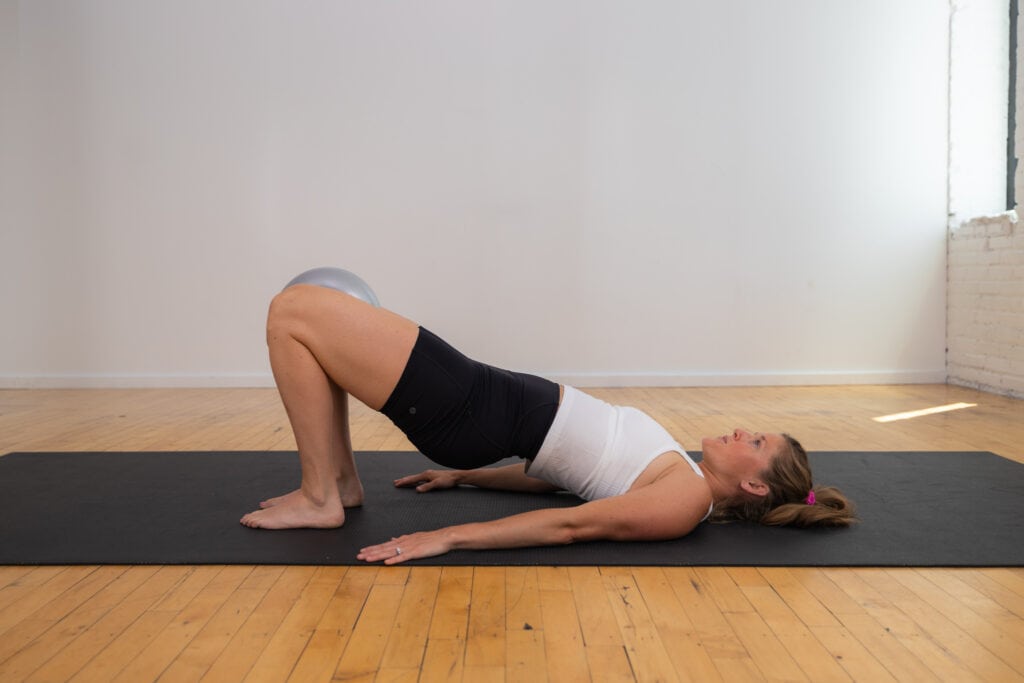
10-Minute Beginner Pilates Ab Workout for Diastasis Recti
Rebuild your core with 5 Beginner pilates ab exercises you can do at home to heal diastasis recti.
These beginner pilates exercises are specifically designed to heal diastasis recti, strengthen the pelvic floor and glutes, and rebuild your abs after baby.
Add this diastasis recti workout to your postpartum workout routine as you feel capable, starting with 1-2 times a week and scaling up to 3-4 times a week.
Workout Equipment:
A pilates ball. You can also use a kids squishy ball or a throw pillow if you don’t have a pilates ball available.
Workout Instructions:
Follow along with the guided Beginner Pilates Ab Exercises on YouTube, led by certified personal trainer and fitness instructor, Lindsey Bomgren.
Your Workout Looks Like This:
- 5 Beginner Pilates Exercises for Diastasis Recti
- Timed Intervals (40 seconds of work, 20 seconds rest; complete as many reps as you can in the timed interval)
- Repeat Each Exercise x2 (back to back — see if you can increase the intensity on the second set)
Workout Outline
- Transverse Abdominal Breathing (Core Breathing)
- Dead Bug
- Dead Bug March
- Side to Side Leg Lowers
- Glute Bridge
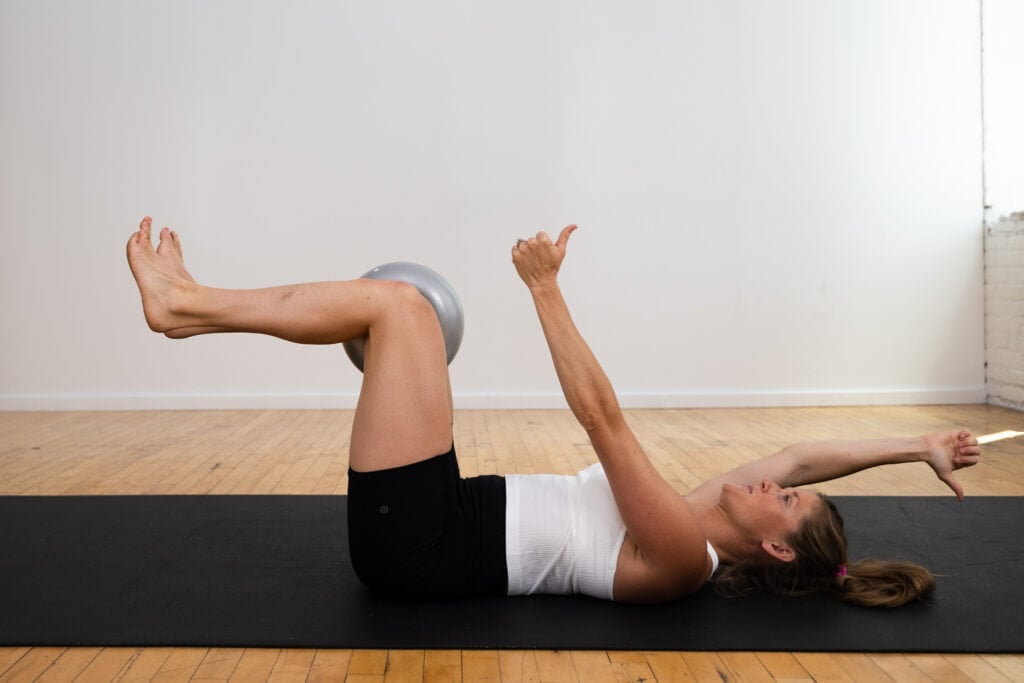
Prefer to Watch On YouTube?
5 Beginner Pilates Ab Exercises for Diastasis Recti
Transverse Abdominal Breathing (Core Breathing)
Targets: The deep transverse abdominal muscles (TVA) and pelvic floor muscles. These muscles support your internal organs, your inter-abdominal pressure system, and provide stability and mobility of your lower spine.
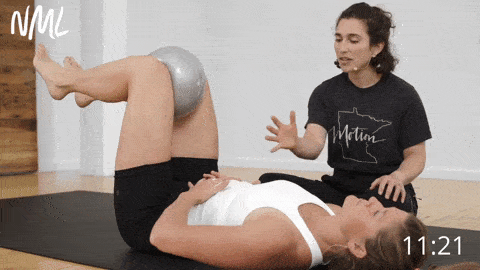
How To Do Transverse Abdominal Breathing (Core Breathing)
- Start lying on your back, lifting your knees to form a 90-degree angle (knees stacked on top of hips). Place a pilates ball between your knees.
- To find your transverse abdominis muscles, fake cough. The muscles you feel ‘pop’ when you cough are your transverse abdominis muscles. To engage them, take a deep breath and allow your core and pelvic floor to relax. Imagine there is a string between your hip bones and as you exhale that string (or your TA muscles) is pulling your hip bones together.
- As you inhale, let the belly expand (let your lower back pop off the ground).
- As you exhale, squeeze your knees together to compress the pilates ball. Pull the belly in tight and think about tucking the tailbone underneath you to press your back into the mat.
Modification: Keep feet planted on the floor to reduce intensity.
Dead Bug
Targets: Transverse abdomen (deep core muscles below your rectus abdominis muscle or six pack ab muscles), lower abs, inner thighs and hip flexors.
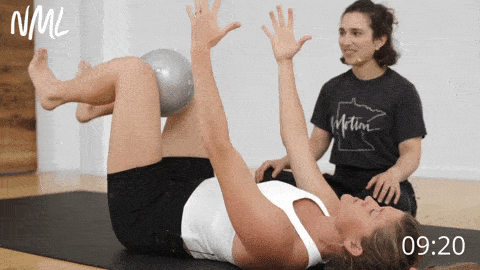
How To Do A Dead Bug
- Start lying on your back, core activated to press your lower back into the mat. Place a pilates ball between your knees.
- Lift your knees to form a 90-degree angle (knees stacked on top of hips), and extend your hands straight overhead.
- Inhale, letting your belly expand.
- Exhale, squeezing the pilates ball between your knees and extending your right arm overhead. With control, return to starting position.
- Inhale, letting your belly expand and relaxing your thighs.
- Exhale, squeezing the pilates ball and extending your left hand overhead. Return to starting position with control.
Modification: Reduce range of motion of your legs and arms to reduce the intensity of this exercise.
Dead Bug March
Targets: Deep transverse abdominal muscles (TVA), rectus abdominis muscle, lower abs, chest, shoulders and hips.
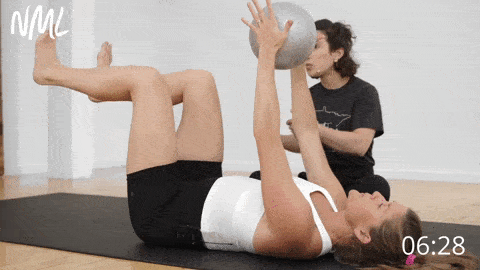
How To Do A Dead Bug March
- With your low back pressing firmly into the mat and your abdominal wall wrapped as tightly as possible around your core, bring your legs to a 90-degree bend.
- Extend your arms straight overhead, wrists over shoulders, holding a pilates ball between your hands.
- Inhale, letting your belly expand.
- Exhale, squeezing the ball between your hands and kicking your right foot out away from your body.
- Inhale, returning to starting position.
- Exhale, squeezing the ball between your hands and kicking your left leg out away from the body.
Modification: Reduce range of motion, keeping knees bent rather than extending fully.
Side-To-Side Leg Lower
Targets: Obliques (muscles along the sides of your torso), lower abs and hip flexors.
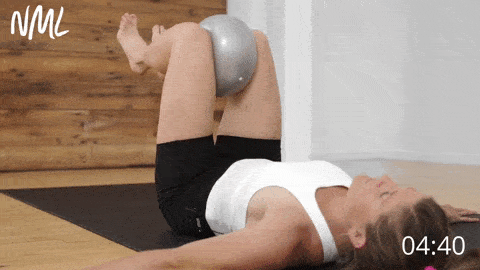
How To Do Side-To-Side Leg Lowers
- Start lying on your back, core activated to press your lower back into the mat.
- Lift your legs, knees bent at 90 degrees (knees stacked on top of hips) and squeeze a pilates ball between your knees.
- Keeping your shoulder blades flat on the mat, slowly lower your knees to the right side of your body, knees stacked and tapping the mat with your right knee.
- Squeeze your abs as you pull your knees back up to starting position.
- Repeat on the left, lowering your knees so your left knee taps the mat on the left side of your body.
Modification: Reduce range of motion of your legs to reduce the intensity of this exercise.
Glute Bridge
Targets: Glutes, hamstrings, hips and pelvic floor.
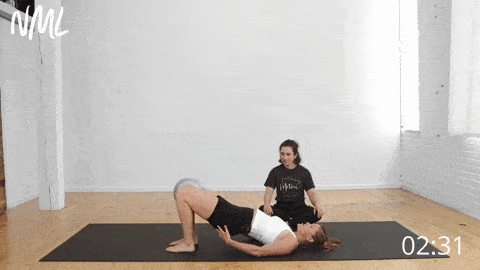
How To Do A Glute Bridge
- Start laying on your back, feet planted under knees. Place a pilates ball between your knees.
- Press through your heels to lift your glutes off the mat, squeezing your glutes as you lift. As you lift upwards, squeeze your inner thighs together, pressing into the pilates ball.
- Exhale, slowly lowering your hips to hover an inch above the mat and releasing some of the tension on the pilates ball.
FAQs
Diastasis recti is common in women who have experienced pregnancy. Diastasis recti occurs when the rectus abdominis muscles (six-pack ab muscles) and linea alba (connective tissue) separate as your belly grows during pregnancy. This abdominal separation can range from mild to severe.
Pilates workouts are particularly well-suited for diastasis recti because they are naturally low impact and focus on activating and strengthening all the muscles related to your core. This involves the transverse abdominals, pelvic floor muscles, hips and glutes.
Every postpartum recovery experience is different. I personally started doing these pilates for diastasis recti exercises around 2 weeks postpartum. Start where you are and do what you can! Maybe you start by performing the first three exercises for 20-30 seconds, rest and repeat. You can always work up to performing these exercises for 40 seconds.
If it’s an option available to you, I recommend this to everyone who’s been through a pregnancy. I learned so much about my body from my sessions with Dr. Sari (Motion MN). Outside of diastasis recti, other reasons to see a pelvic floor PT include symptoms like bladder control/urinary incontinence or fecal incontinence, urinary or fecal urgency, heaviness/pressure, pain or fear with return to intercourse, constipation or issues with bowel movements, or just wanting guidance with return to exercise.
The American College of Obstetricians and Gynecologists (ACOG) says that postpartum exercise can strengthen abdominal muscles, boost energy, relieve stress, promote better sleep and may help prevent mood swings, postpartum depression and anxiety.
More Workouts
Diastasis Recti WorkoutsPin This Workout: Beginner Pilates for Diastasis Recti
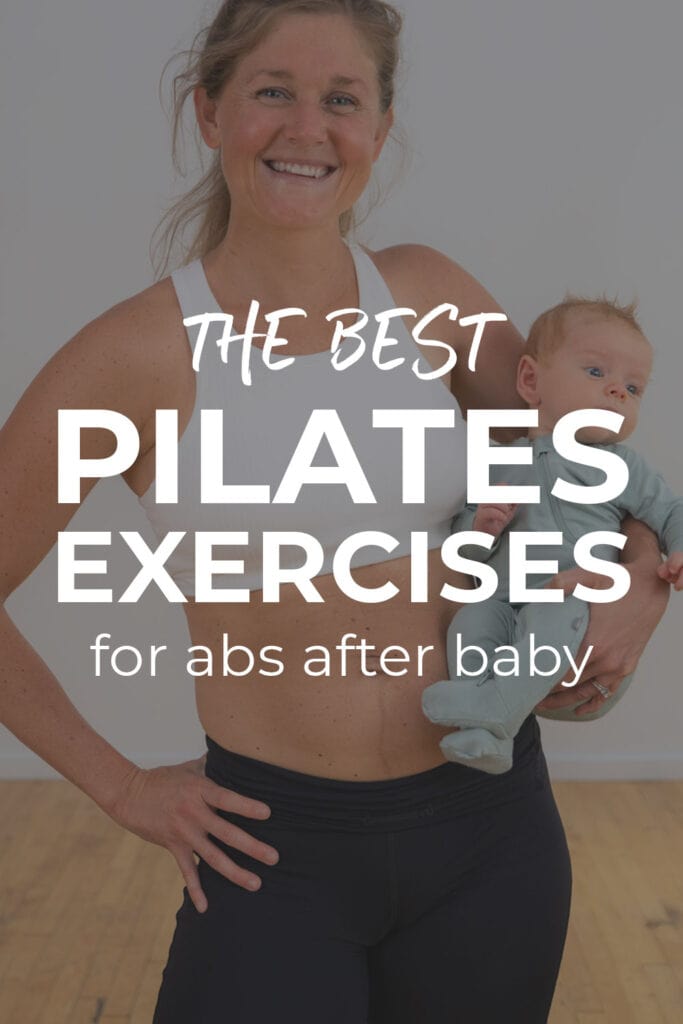
This post includes affiliate links. I do earn a commission for products purchased using these links (at no additional cost to you). Thank you for supporting Nourish Move Love, making the content you see on this blog possible.










